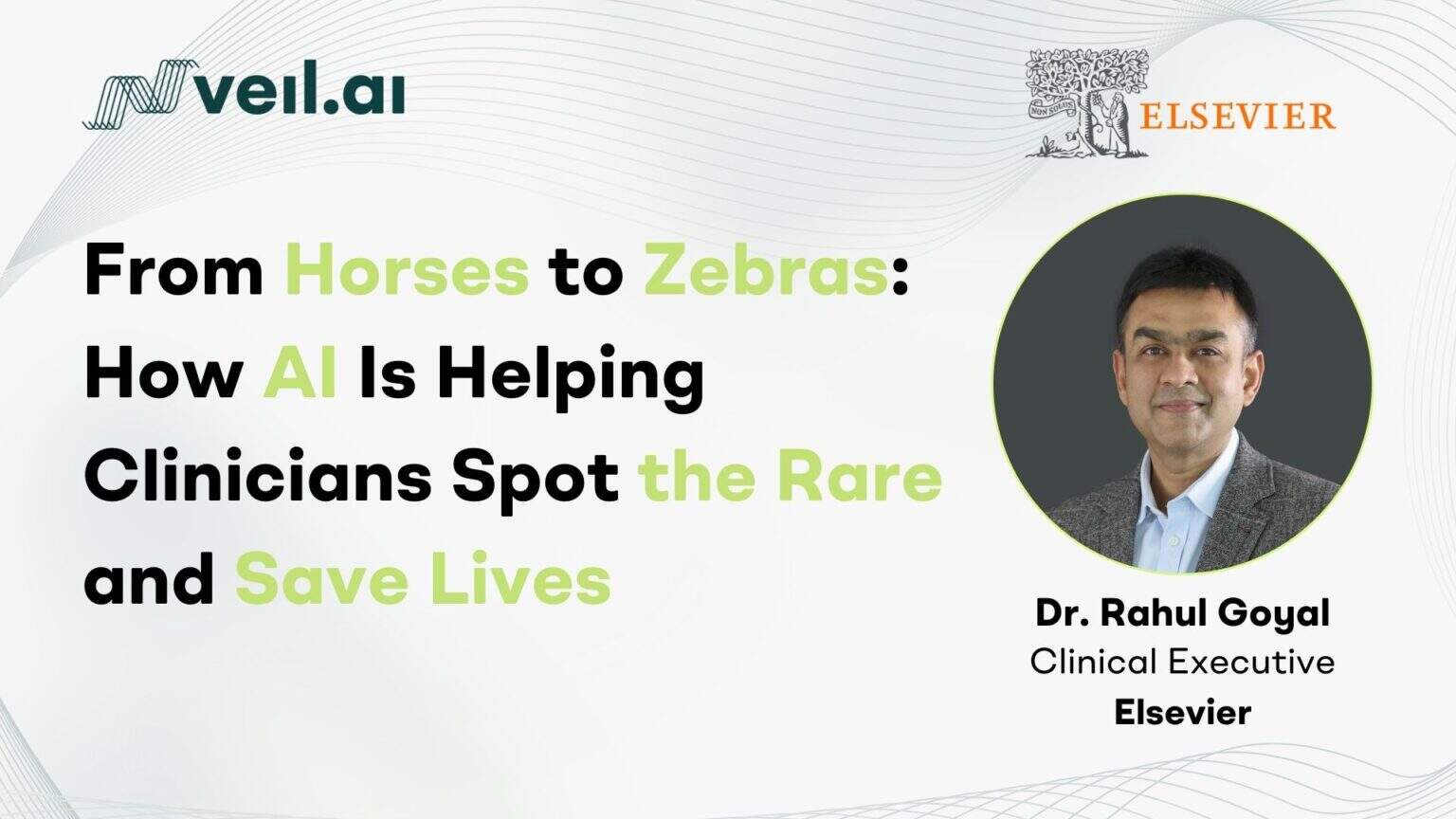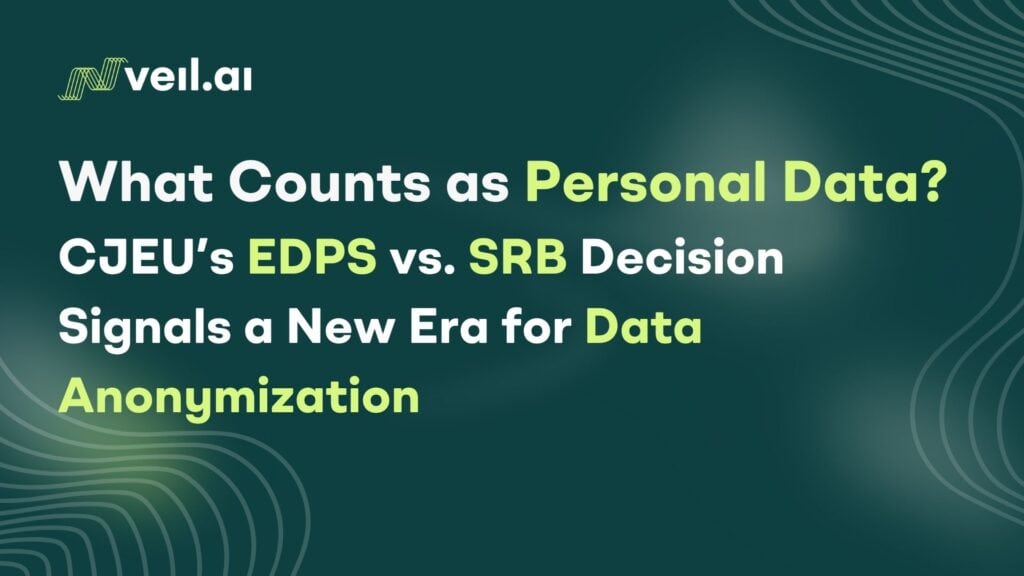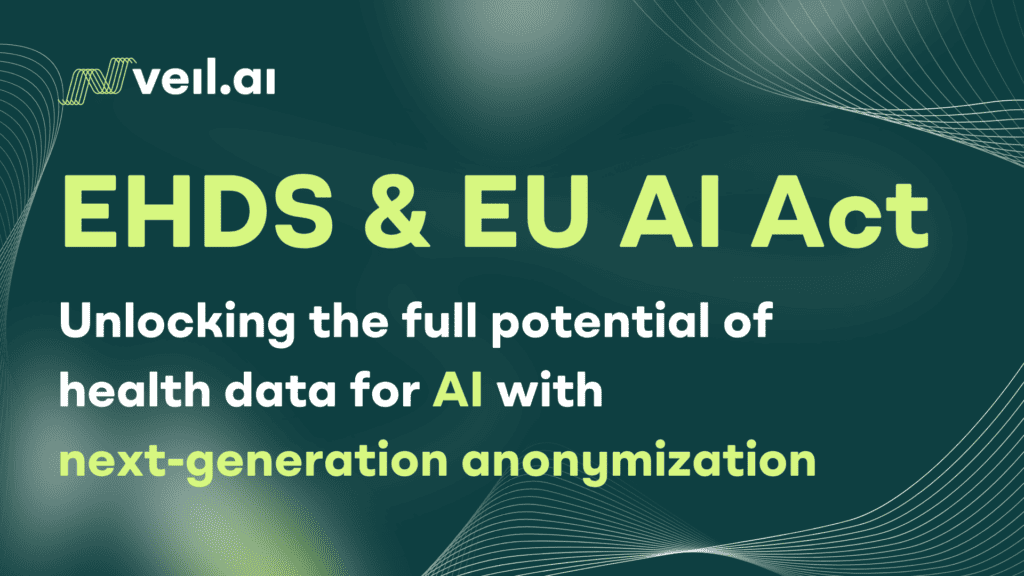Rare diseases affect hundreds of millions worldwide, yet they often go undiagnosed or misdiagnosed for years and face long odds for effective treatment. We discussed with Dr. Rahul Goyal, Clinical Executive at Elsevier, about the ability of tools like ClinicalKey AI and VEIL.AI’s Anonymization Engine to support clinicians in improving time-to-diagnosis and to help enable the creation of more effective therapies for patients with rare diseases.
While rare diseases by definition affect only a small number of individuals, the fact that there are more than seven thousand different kinds of rare disease means that more than 300 million people lived with rare diseases worldwide in 2024— a number comparable to more than 60% of the population of all EU member states. Rare disease patients wait an average of more than five years to receive an accurate diagnosis, and only about 10% of rare disease patients have an approved therapy for their treatment. We sat down with Dr. Rahul Goyal, Clinical Executiveat Elsevier and a practicing clinician, to share insights on how artificial intelligence can help clinicians improve time-to-diagnosis and enhance patient care for rare diseases.
From “horses” to “zebras”: Overcoming diagnostic bias
“As doctors, we are asked during our training time and time again that whenever you hear hooves, think of horses, not zebras,” says Goyal. Statistically speaking, the common condition is more likely— but Dr. Goyal admits that after 20 years as a general practitioner, he’s learned the hard way that zebras do sometimes appear. That’s why Dr. Goyal is turning to AI for help in identifying rare diseases in his clinic.
“… my patients don’t come with the diagnoses. They come in with undifferentiated symptoms”
– Dr. Rahul Goyal, Clinical Executive at Elsevier
ClinicalKey AI, grounded in Elsevier’s trusted knowledge, curated a body of books, journals, and medical reviews, prompts clinicians to consider a broader range of conditions when diagnosing symptoms. If a patient arrives with “headache, fever, stiff neck”, the system surfaces common conditions like meningitis. “But my patients don’t come with the diagnoses,” Dr. Goyal notes. “They come in with undifferentiated symptoms.” And those symptoms might be found in a disease more rare than the usual fare—a possibility flagged by the ClinicalKey AI system, raising visibility for rare diagnoses that might slip under the radar. This kind of tool targets one of the biggest problems for rare disease patients: the repeated misdiagnoses and long delay of the “diagnostic odyssey” before they finally receive the right diagnosis.
After the end of the odyssey: Improving treatments for rare disease
For patients with a zebra disease, diagnosis might be the end of their “diagnostic odyssey”, but it often does not mean effective treatment. Rare diseases are precisely that—rare, and so relevant data is often scattered across institutions or different countries. Because of the sensitive nature of health data, data sharing across institutions or borders is often difficult, expensive, or even impossible. This lack of consolidated data inhibits everything from observational studies to more advanced clinical trials, resulting in a startling lack of approved treatments for most rare diseases.
“As doctors, we are asked during our training time and time again that whenever you hear hooves, think of horses, not zebras,”
– Dr. Rahul Goyal, Clinical Executive at Elsevier
That’s precisely where VEIL.AI steps in: by utilizing next-generation anonymization technology to anonymize patient data while preserving statistical relevance. Once anonymized under stringent guidelines, clinical data can cross borders—institutional or physical—far more freely. In the PHEMS consortium, VEIL.AI aims to facilitate seamless data collaboration between several children’s hospitals in Europe, fostering innovation of data-driven tools for diagnosis, treatment, and follow-up care for pediatric patients. In the WISDOM project, VEIL.AI will have a similar role in enabling cross-border data transfer for patients with immune-mediated diseases such as multiple sclerosis and myasthenia gravis. VEIL.AI’s technology ensures that combining patients’ records from multiple sites remains GDPR-compliant, respecting patient privacy while creating robust datasets for clinical research.
By accumulating large enough datasets, rare disease researchers have what they need to run meaningful studies—and can ultimately feed back those insights into a decision support tool—like ClinicalKey AI—with trusted, evidence-based clinical content with conversational search powered by generative AI. Over time, the knowledge base grows richer, refining the system’s ability to spot subtle warning signs. It’s a virtuous cycle: each newly diagnosed rare disease could supply data that helps clinicians identify the next.
A shared vision: Shorting the wait and enhancing patient care
Together, these complementary technologies—ClinicalKey AI’s advanced generative-AI-powered clinical decision support tool for clinicians and VEIL.AI’s next-generation anonymization technology—may help clinicians cut the five-year diagnostic journey for rare disease patients and improve care when patients receive the correct diagnosis. ClinicalKey AI itself has championed “Year of the Zebra” awareness campaigns, reinforcing Elsevier’s commitment to shining a light on rare diseases. The complementarity with solutions like VEIL.AI’s suggests a growing movement: bridging clinical care and big data while treating patient privacy not as a barrier, but as a design principle.
To learn more about how next-generation anonymization is connecting researchers and accelerating rare disease breakthroughs, contact us.






